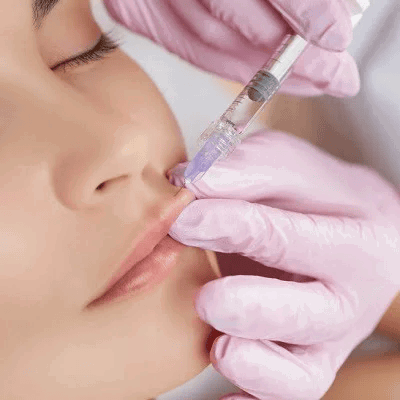The Science Behind Lip Augmentation Techniques
Lip augmentation has grown increasingly popular over the last decade as more individuals seek fuller, more youthful-looking lips. Whether influenced by beauty trends, social media, or personal aesthetics, the desire for plumper lips has transformed the cosmetic industry. But what’s really behind the magic of lip enhancement? This article takes a closer look at the science behind Lip Augmentation techniques, their effectiveness, safety, and what you should consider before undergoing treatment.

What Is Lip Augmentation?
Lip augmentation refers to a variety of cosmetic procedures aimed at increasing lip volume, defining shape, and improving symmetry. These procedures can be temporary or permanent and may involve injectable fillers, fat transfer, or even surgical implants.While many view lip augmentation as purely aesthetic, there’s a surprising amount of medical science involved in these treatments. Understanding how each technique works can help individuals make informed decisions about the options available to them.
Common Lip Augmentation Techniques and How They Work
1. Hyaluronic Acid (HA) Fillers
Hyaluronic acid fillers are the most widely used method for lip enhancement. HA is a naturally occurring substance in the body that retains moisture and adds volume. When injected into the lips, HA binds with water molecules, instantly plumping the area.Popular HA fillers include brands like Juvederm, Restylane, and Belotero. These products vary in thickness and longevity but generally last between 6 to 12 months.
Why HA works:
Hyaluronic acid attracts up to 1,000 times its weight in water, making it ideal for creating a supple, hydrated appearance. Additionally, HA fillers are reversible, giving patients peace of mind if results are not as expected.
2. Fat Transfer (Fat Grafting)
Fat transfer involves liposuctioning fat from one part of the body (like the abdomen or thighs) and injecting it into the lips. This technique is considered more natural because it uses the patient’s own tissue.
The science behind fat grafting:
When fat is harvested and re-injected, only a portion survives long-term. The procedure relies on the body's ability to integrate the fat into the lip tissue through new blood vessel growth. With proper technique, the results can be permanent, although some volume loss is expected during the healing process.
3. Lip Implants
For those seeking permanent results, lip implants made from materials like silicone or expanded polytetrafluoroethylene (ePTFE) can be surgically inserted. These implants come in different sizes and shapes to match the natural contour of the lips.
Medical mechanics:
Lip implants offer a stable structure that doesn’t degrade over time. However, surgery comes with higher risks, including infection, implant shifting, and scarring. For this reason, implants are less common than injectable options.
4. Collagen-Based Fillers (Less Common Today)
Before HA fillers became the go-to choice, collagen was widely used for lip augmentation. Derived from bovine or human sources, collagen injections provided volume but had a shorter lifespan and a higher risk of allergic reaction.
Scientific shift:
HA's superior biocompatibility and longer-lasting results have largely replaced collagen as the filler of choice, although some niche markets still use it for specific outcomes.
Factors That Affect Lip Augmentation Results
Several biological and lifestyle factors influence the outcome and longevity of lip enhancement procedures:
- Metabolism: Faster metabolisms break down fillers more quickly.
- Age: Older individuals may need more volume due to reduced collagen and fat in the lips.
- Hydration: Because HA attracts water, staying hydrated can enhance results.
- Injector technique: An experienced practitioner understands facial anatomy and uses strategic placement for optimal symmetry and natural appearance.
Is Lip Augmentation Safe?
In general, lip augmentation is considered safe when performed by a licensed and trained professional. However, as with any cosmetic procedure, there are potential side effects, including:
- Swelling and bruising
- Lumps or asymmetry
- Allergic reactions (rare with HA fillers)
- Vascular complications (if filler is inadvertently injected into a blood vessel)
Choosing a reputable clinic and practitioner is critical. Always ask about the product being used, the injector’s experience, and what to expect during recovery.
The Role of Science in Advancing Lip Augmentation
Modern lip augmentation owes much of its success to biomedical research and advancements in dermal filler technology. Over the years, products have become more refined, offering better texture, longevity, and safety. For example:
- Cross-linked HA molecules in newer fillers provide more structure and longer-lasting results.
- Cannula injection techniques reduce trauma to tissues and lower the risk of bruising.
- Ultrasound imaging is sometimes used to map facial blood vessels and reduce risks.
These innovations reflect how science continues to elevate cosmetic procedures from trial-and-error to precision-based treatments.
FAQs About Lip Augmentation
1. How long does lip augmentation last?
Most HA fillers last 6–12 months. Fat transfer can last several years, while implants are permanent unless removed.
2. Is the procedure painful?
Mild discomfort is expected. Most fillers contain lidocaine, and topical numbing creams can be applied beforehand.
3. Can I reverse a lip filler if I don’t like the results?
Yes. Hyaluronidase, an enzyme, can dissolve HA fillers within hours if needed.
4. How much does lip augmentation cost?
Prices vary widely based on location and technique.
5. Will my lips look unnatural?
Not if done correctly. A skilled injector will enhance your lips while maintaining natural proportions and symmetry.
6. Are there age restrictions for lip augmentation?
Most clinics require patients to be at least 18 years old. Some providers may recommend waiting until facial development is complete.
Final Thoughts
Lip augmentation isn’t just a beauty trend—it’s a scientifically backed procedure that blends art and medicine. From moisture-binding hyaluronic acid to permanent silicone implants, there’s a solution for nearly every aesthetic goal. The key is making an informed decision with the guidance of a qualified professional.If you’re considering lip augmentation, take the time to research your options, understand the underlying science, and consult a trusted practitioner. With the right approach, achieving fuller, balanced lips can be a safe and rewarding experience.
